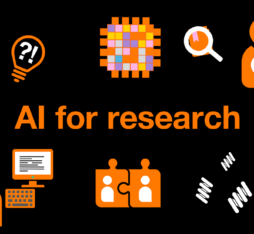• Companies, which buy or co-develop targeted LLM solutions and AI agents, have succeeded in automating simple tasks. Such initiatives result in measurable savings but also increase the risk that employees who rely on AI will lose skills.
• To avoid an anxiety-ridden stasis in the workplace, AI tools should be deployed within the framework of a collective transition that integrates feedback from a full range of professions and strikes a balance between performance and well-being.
Generative artificial intelligence (GenAI) has been massively adopted in workplaces, but mainly on the initiative of individual employees rather than as part of a defined corporate strategy. According to a recent MIT research project, only 40% of businesses have purchased LLM subscriptions even though 90% report that members of staff make use of GenAI tools. At Orange, the adoption of GenAI has largely been driven by employees instead of by management. In late 2023, the Orange Institute of Professions (OIP) reported that 64% of employees used generative AI either at home or at work, and that a majority expressed a preference for ChatGPT (2 in 3 employees). “Generic tools like ChatGPT are adopted for their flexibility but not used for mission-critical tasks due to their unreliability,” notes the MIT report. “Non-users accounted for 18% of the under-30s as opposed to 41% of the over-50s. This gap is not unbridgeable in a context where younger employees are less hesitant about professing to use GenAI at work,” points out the Orange Institute of Professions.
MIT reports that real savings for companies are generated by the automation of repetitive tasks (summaries, contract classification etc.).
A winning strategy
A key finding of the MIT survey is that 95% of enterprise AI solutions 95% fail to generate any revenue. The researchers also note that companies which successfully take advantage of GenAI respect several rules:
- Instead of doing all the work themselves, they buy or co-develop solutions that typically succeed 67% of the time as opposed to 33% for in-house projects.
- They focus on tools for specific professions which can learn from user feedback.
- They target simple, measurable processes — such as automating call summaries or generating contracts — rather than pursuing ambitious, high-risk projects.
- They invest in AI agents: autonomous systems that can negotiate with vendors or resolve customer queries without human intervention.
The prospect of substantial savings
According to the American research institute, real savings for companies are generated by the automation of repetitive tasks (summaries, contract classification etc.). with measurable gains in productivity, for example a 40% increase in lead qualification speed. Those who succeed in implementing such programmes also stand to benefit from an annual $2-10 billion in savings on external costs (BPO spending, and out-of-house agencies). The deployment of AI agents could yield even more substantial savings, but their use may also result in unwanted consequences for companies. “We have seen that habits become established very quickly, and the risk that an unconscious reliance on AI leads to skill loss needs to be evaluated over time,” points out the OIP, which further emphasizes that AI generated applications may disregard the Group’s security rules. “If we allow employees to accept a Faustian bargain that leaves them in an autonomous bubble, they may be individually more productive because they are faster, but the reality is that they will be more passive and dependent on AI, which will have a negative impact on their skills.”
Two possible scenarios
According to the Orange Institute of Professions, decisive action will be required to avoid a scenario of anxiety-ridden stasis, in which AI use remains compartmentalized with no overall framework. The consequences of such a scenario are highly problematic: teams will continue to be isolated, contradictions will not be resolved, and AI will mainly be perceived as threatening rather than empowering. However, an ambitious coordinated transition can be achieved by collective initiatives that allow different professional groups to determine an appropriate balance between efficiency and the quality of the work they produce. With a concerted effort, non-users can be brought on board, employees’ skills can be ramped up and AI can be harnessed to deliver greater well-being as well as increased performance. The challenge now is to deploy this technology in a manner that restores everyone’s agency.











